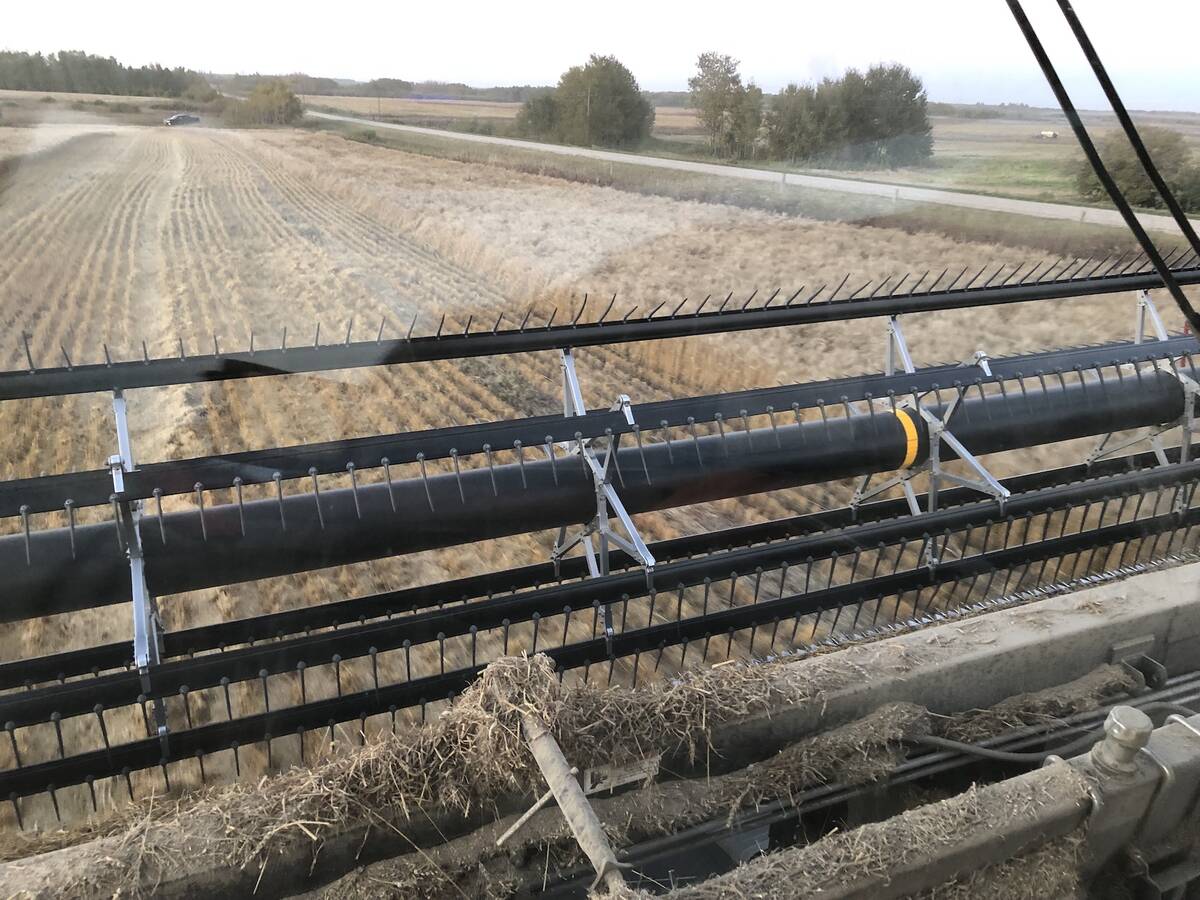Some voices are instantly hostile to any emphasis on productivity. They act as if there is no emergency – even though in the poorest, hungriest places on earth, population is growing faster than productivity, and the climate is changing.
(The following is an excerpt from a speech by Bill Gates, chairman and co-founder of Microsoft and co-chairman of the Bill and Melinda Gates Foundation, to the World Food Prize conference held recently in Des Moines, Iowa. The entire speech can be found at: http://www.gatesfoundation.org)
Read Also

The poetic epic of Manitoba farming 2025
Former Manitoba Co-operator editor John Morriss returns for his yearly poetic sum up of the farming year and look ahead into 2026.
When we started our foundation, we agreed that our giving should be guided by our belief that all lives have equal value – that every person deserves the chance to live a healthy and productive life.
Over time, our search for the greatest leverage brought us to the most compelling challenge in development: how do you help people who live on less than a dollar a day?
They face huge difficulties. How can they get some traction, so that their daily struggle can lead to a better life?
The answer is in the work they do. Three-quarters of the world’s poorest people get their food and income by farming small plots of land. So if we can make small-holder farming more productive and more profitable, we can have a massive impact on hunger and nutrition and poverty.
Melinda and I believe that helping the poorest smallholder farmers grow more crops and get them to market is the world’s single most powerful lever for reducing hunger and poverty.
Of course, the idea that better farming can end hunger and poverty is not new. It was demonstrated by Dr. Borlaug. It was honoured with the Nobel Prize. It was called the Green Revolution, and it helped avert famine, save hundreds of millions of lives, and lift whole countries out of poverty.
It was one of the great achievements of the 20th century.
But it didn’t go far enough. It didn’t go to Africa.
Africa is the only place where per capita cereal yields have been flat over the last 25 years. The average farmer in sub-Saharan Africa gets just over half a ton of cereal per acre. An Indian farmer gets twice that; a Chinese farmer, four times that; an American farmer; five times that.
The technology and new approaches that are transforming agriculture in other parts of the world can be applied in new ways, and help Africa flourish too.
Now is the time. The food crisis has forced hunger higher on the world’s agenda. From NGOs to the G8 to African Heads of State there is a rush of new commitment.
But there is also trouble.
This global effort to help small farmers is endangered by an ideological wedge that threatens to split the movement in two.
On one side is a technological approach that increases productivity.
On the other side is an environmental approach that promotes sustainability.
Productivity or sustainability – they say you have to choose.
It’s a false choice, and it’s dangerous for the field. It blocks important advances. It breeds hostility among people who need to work together. And it makes it hard to launch a comprehensive program to help poor farmers.
That’s why our foundation works closely with local farmers’ groups. And that’s why we are one of the largest funders of sustainable approaches such as no-till farming, rainwater harvesting, drip irrigation, and biological nitrogen fixation.
The environment also benefits from higher productivity. When productivity is too low, people start farming on grazing land, cutting down forests, using any new acreage they can to grow food. When productivity is high, people can farm on less land.
But some people insist on an ideal vision of the environment – divorced from people and their circumstances. They have tried to restrict the spread of biotechnology into sub-Saharan Africa without regard to how much hunger and poverty might be reduced by it, or what the farmers themselves might want.
Some voices are instantly hostile to any emphasis on productivity. They act as if there is no emergency – even though in the poorest, hungriest places on earth, population is growing faster than productivity, and the climate is changing.
According to a Stanford University study published last year in Science Magazine – if farmers in Southern Africa are planting the same variety of maize in 2030 that they are planting today, the harsher conditions from climate change will reduce their productivity by more than 25 per cent.
Declining yields, at a time of rising population, in a region with millions of poor people, means starvation.
The charge is clear we have to develop crops that can grow in a drought; that can survive in a flood; that can resist pests and disease. We need higher yields on the same land in harsher weather. And we will never get it without a continuous and urgent science-based search to increase productivity especially on small farms in the developing world.
The fact is, we need both productivity and sustainability – and there is no reason we can’t have both.
Many environmental voices have rightly highlighted the excesses of the original Green Revolution. They warn against the dangers of too much irrigation or fertilizer. They caution against a consolidation of farms that could crowd out smallholder farmers.
These are important points, and they underscore a crucial fact: the next Green Revolution has to be greener than the first. It must be guided by smallholder farmers, adapted to local circumstances, and sustainable for the economy and the environment.
Let me repeat that. The next Green Revolution must be guided by small-holder farmers, adapted to local circumstances, and sustainable for the economy and the environment.
The last thing anyone should do is create short-term gains for poor farmers that have long-term costs for their children.













